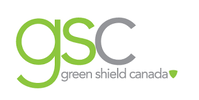15-minute Posture Sequence
1. Distribute Weight Evenly
Steps
- Stand with your feet hip width apart and with a soft, slightly bent knee. Take a moment to focus on your lower body. Note any strain felt in the muscles and joints of the feet, ankles, legs, and hips. Do you feel stable? If someone pushed you, would you fall?
- Lift all of your toes up off the floor. At which points on the bottom of the foot do you feel the most weight/pressure? For many people, when the toes are lifted, pressure is felt on the big toe side of the ball of the foot and on the heel.
- Keeping your toes lifted, shift your weight across the ball of the foot and the heel until you feel even pressure distributed on the heel, big toe side and little toe side of the ball of the foot. You may feel your leg muscles engage as you do this (that is a good thing!). Keeping the weight evenly distributed, let your toes rest again on the floor.
- Take a moment to focus on how this new posture feels through your feet, ankles, legs, thighs and hips. Do you feel more stable standing this way than before? Is there any strain felt in the muscles or joints now? Would it be more difficult for someone to push you over?
- Use this exercise throughout the day to balance yourself and establish a strong base for proper posture.
2. Lower Body Stretch & Strengthen
|
|
Strong glutes and lower abdominals and a balanced pelvis are the foundation of proper posture. Sets: 2 Repetitions: 10-12 For optimal results, hold the stretch for 90 seconds.
|
3. Bruegger's Relief Position
|
|
Prepare for this exercise by stand with feet hip width apart and with a soft bend in your knees. Distribute your weight evenly along the soles of your feet (see exercise 1). Duration: hold the position for 5 breaths Repetitions: 5 |
4. Wall Angel Exercise
|
|
Sets: 2 Repetitions: 10-12 |
5. Upper Body Stretch
|
For optimal results, hold each stretch for 90 seconds. Stretching should not be painful. Move gently into the stretch and stop and hold when you feel only a gentle pull through the length of the muscle.
|
a. levator scapula
|
b. upper trapezius
d. sternocleidomastoid
|
c. pec major & minor
To stretch pectoralis major, stand in a doorway with your forearm on the door frame and your shoulder at a 90 degree angle from the body. Take a small step forward with the same side leg (ie: if right arm is the stretch side, step forward with your right leg). Gently and slowly turn the head slightly away from the stretch side. To stretch pectoralis minor, repeat with the shoulder raised at 135 degrees from the body.
|
6. Hyperkyphosis Correction
|
Sets: 3 Repetitions: 10 |
7. Posture Awareness
|
|
Practice posture awareness throughout the day. Posture awareness becomes easier the more you practice; and with increased awareness, you will notice that correcting your own posture becomes easier, too! |

